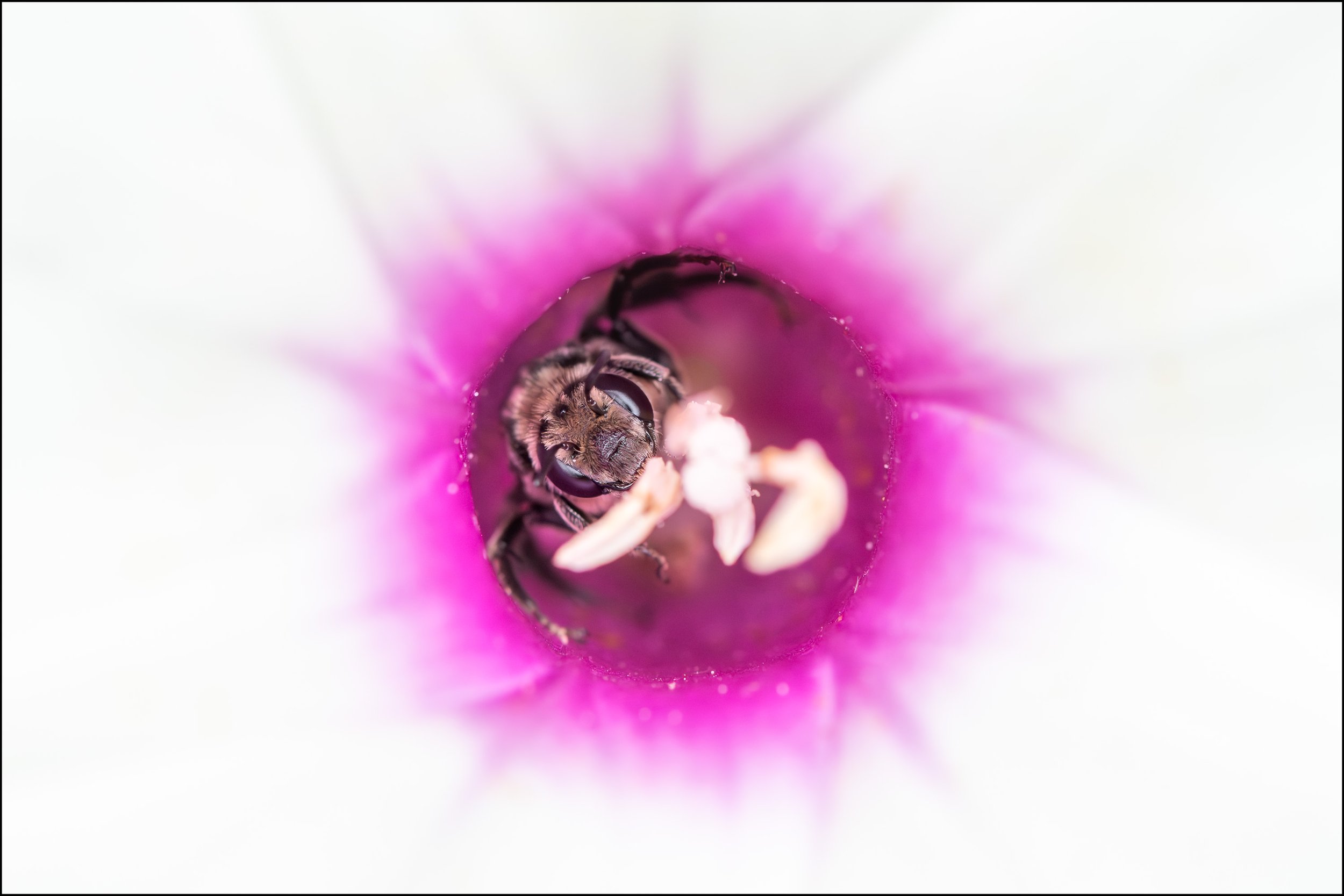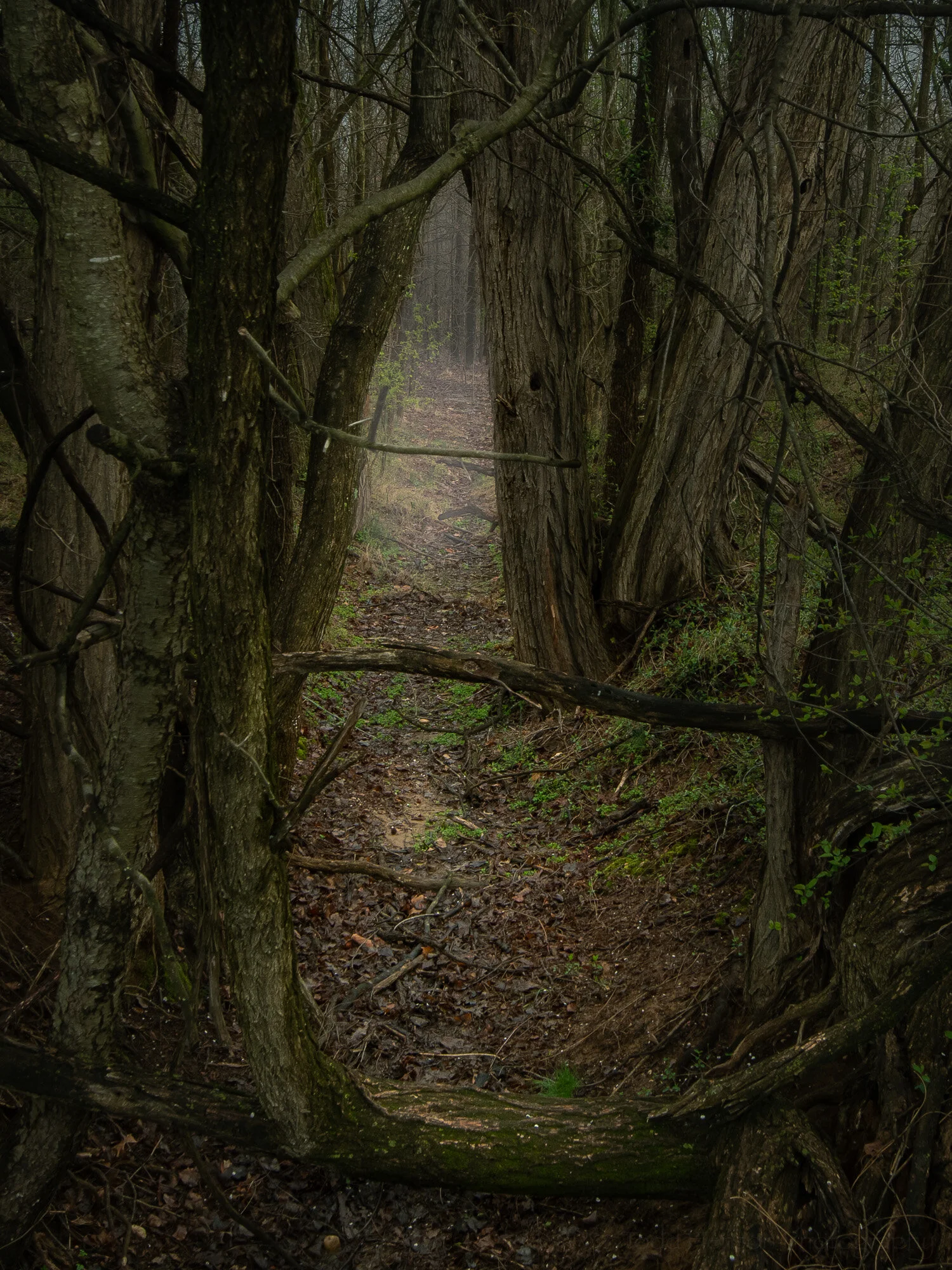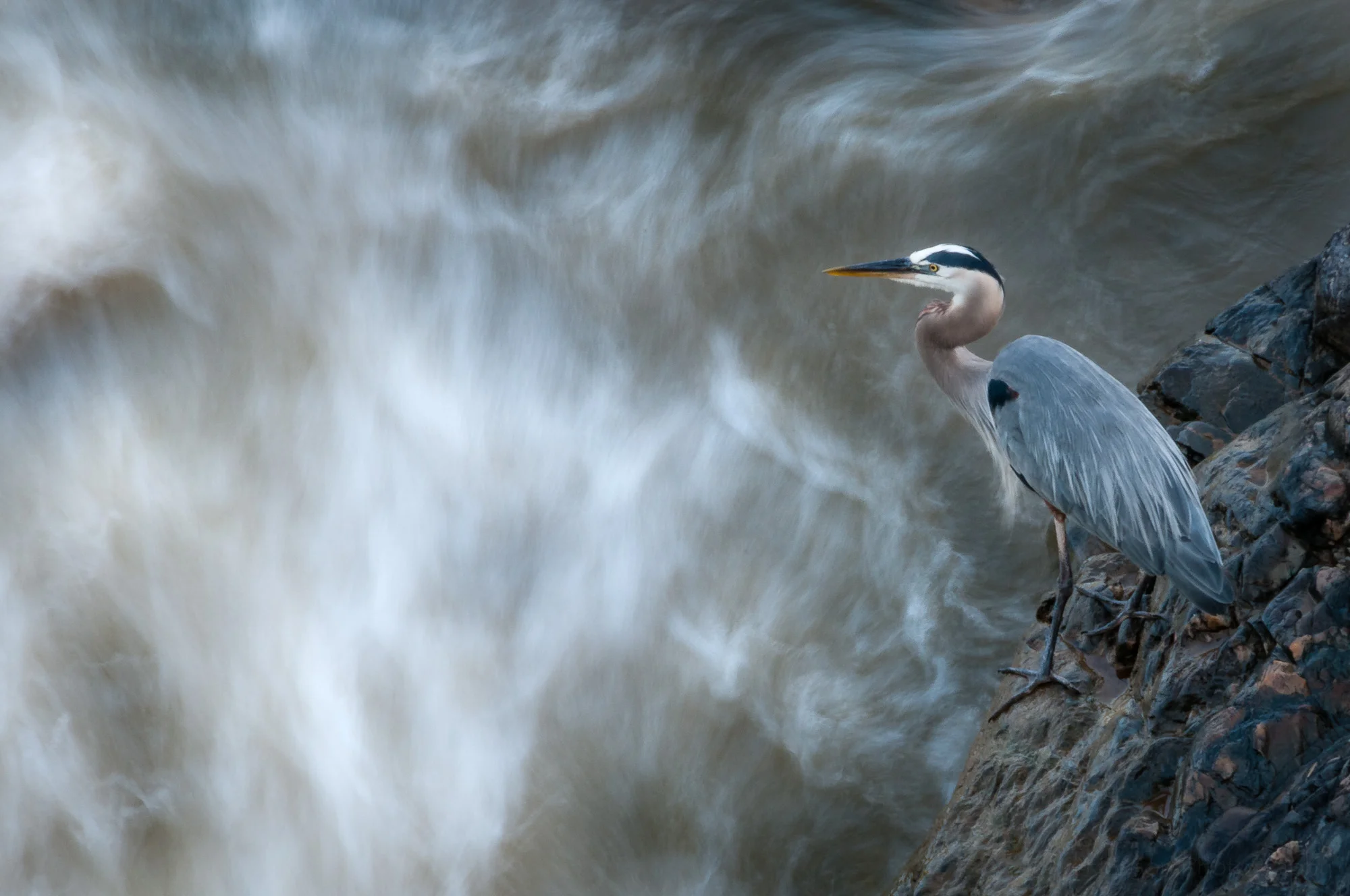A slow shutter speed of 1/60 sec shows the movement of the water, making a more dynamic photograph.
The Potomac River is a popular location for whitewater sports such as kayaking. Between Maryland and Virginia, not too far from Washington, DC, the river narrows and drops in elevation, creating a number of fantastic world class waterfalls.
Riding the wave. A shutter speed of 1/100 sec is a nice balance between slow and fast.
Just below Great Falls the river levels out a bit and provides some nice rapids. This is a great location to ride the waves, with spots where kayakers can maintain their location on the river, as if they were surfing a wave on the ocean but without moving forward.
Slicing through the water. This time the shutter speed was 1/160 sec.
The kayaker in this post was riding in such a location. In one of the photos you can see him smile as he holds his paddle horizontally, riding the crest of the wave. Kayakers were rotating through this location. They would each spend enough time there to get a real workout and enjoy the feel of the river. Then they’d move aside and let another kayaker ride that wave.
Big smiles, enjoying the wave. Shutter speed for this image was 1/200 sec.
For these photos I tried a range of shutter speeds. You can create a number of different looks by changing your shutter speed when photographing fast action like this, especially when water is involved. Use a fast shutter speed and you can freeze the action, showing individual drops of water hanging in mid-air. Use a slower shutter speed and you can really show the motion and action as the water flows around the kayaker, his paddle blurring as he maneuvers it.
A fast shutter speed of 1/1250 sec freezes most of the water, showing individual droplets.
See how dynamic the action can look at a slow shutter speed of 1/60 sec.
If you ever have the opportunity I encourage you to find a location where you can watch and photograph kayakers, then leave a comment below and tell me about your experiences.
Do you enjoy these posts?
Sign up to receive periodic emails with updates and thoughts. Don’t worry, I won’t spam you. And please consider purchasing artwork or products from my online store, and using my affiliate links in the sidebar to the right when shopping online.
I appreciate your support!

































